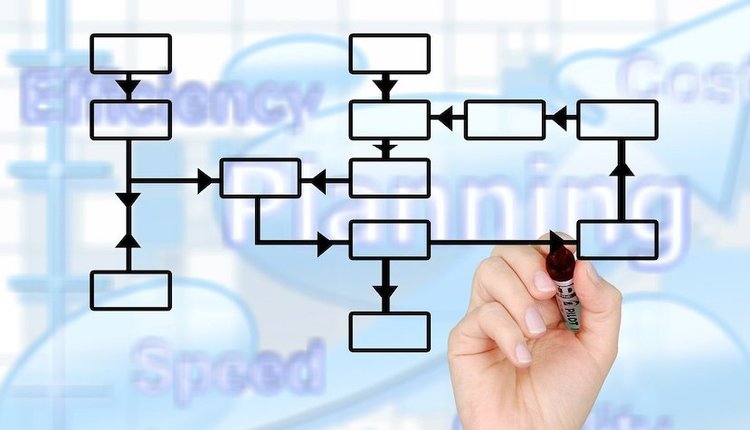
Image by: SonerCdem, ©2017 Getty Images
Let’s go back to the basics, since there is a high level of confusion around the concepts of information management, namely, the eternal relationship between data, information, and knowledge. Before we get started, let's review the associated terms related to "information" so we can build a common ground for reference.
The Basics
Data: Data are values captured in real context through measurements or observations of some sort. Alone, data is absolutely useless, because it is just a list of numbers, characters, or even symbols. Some use the term “raw” data to express the data that hasn’t been processed, such as tidal height, currency exchange rates, or the daily temperature. Yet, this is not necessary; data, by definition, is raw.Information: When we place data in specific context, such as placing a value (salary) with a name (employee) and a date, on the proper form, we may get a pay slip issued by a company for its employees. This we can understand; hence, it is information. We were able to assimilate the value of the data.
Knowledge: The human mind, as well as artificial intelligence, has its own way to process information into knowledge—knowledge that will be useful to make decisions of any kind. If we analyze that pay slip, which I mentioned previously, we can extract a whole lot of knowledge from it. Looking at the payment averages per type of job at the company versus market average will let us know whether they have happy workers. Happy workers are usually 30% more efficient, which is bad news for the company's competition.
Now, exact definitions or concepts may be a bit blurred, because sometimes what might be knowledge at a certain point may just be considered an information input for the next level of derived knowledge. This is why it is important to get information, or knowledge, from reliable sources, since the data initially collected might be far away from our grasp.
Decisions: This is what any sort of manager is paid for. Managers make decisions, and decisions are based on knowledge, which has been, many times, distilled from a long life of absorbing a lot of information.
Shades of Management
Basic semantics should make it clear that information management (IM) is about placing information in a way that we can easily find it and, therefore, use it to produce knowledge. IM has been around for many centuries. Nowadays, information is delivered to us in different ways, such as paper or digital, and may have different formats, like a PDF, an image, a CAD file, a video, an Excel file, etc.Data basically exists in databases and can only be converted into information by processing it for some specific context. This is to say that information is carried by documents. In other words, information is the food we eat, and documents are the dishes on which information is presented. If I receive an invoice by email with an attached PDF, I do not classify this document as an “email” or “PDF” but as an “invoice”—the email was just the carrier, and the PDF was just the format.
Document management (DM): Since information travels and sits on documents, the term “document management” was created long ago, starting with paper-based solutions. Then computers and scanners came along. For the first time, corporations could manage their documents using “electronic” tools.
Electronic document management (EDM): This is how we arrived at EDM, which started with a marketing push around paper that could be digitized and then “moved around” in this digital format. Nevertheless, soon enough, computers started to generate digital files, mainly with the dawn of the PC era. Applications started to be available, and those applications created all sorts of computer files.
Enterprise content management (ECM): There are a lot of files (emails, PDF, CAD files, videos, etc.) within a corporation, as well as processes and related data. Files must be stored, retrieved, and sent on a particular flow, considering a specific process, and eventually routed by specific data on them. In order to do all this, ECM came along. So far, we are ok with what happens to files (documents), but now, we want it to be automatic.
Intelligent information management (IIM): IIM came along as a designation to add some sort of artificial intelligence or, if you will, some sort of sophisticated automatic processing to the information or to the direct files, which carry that information. Some examples include automatically searching and processing information that can create a high level of knowledge, automatic notifications to people, document or information processing from mobile equipment with minimal human intervention, or even extracting all sorts of information out of complex documents, such as video files.
The different acronyms only reflect the differences in the complexity of the types of solutions, but they all come back to “information management.” Again, if you consider that information travels and sits on documents (i.e., any computer file), then we could go back to the old and moldy designation of “document management.”
Document management (DM): Since information travels and sits on documents, the term “document management” was created long ago, starting with paper-based solutions. Then computers and scanners came along. For the first time, corporations could manage their documents using “electronic” tools.
Electronic document management (EDM): This is how we arrived at EDM, which started with a marketing push around paper that could be digitized and then “moved around” in this digital format. Nevertheless, soon enough, computers started to generate digital files, mainly with the dawn of the PC era. Applications started to be available, and those applications created all sorts of computer files.
Enterprise content management (ECM): There are a lot of files (emails, PDF, CAD files, videos, etc.) within a corporation, as well as processes and related data. Files must be stored, retrieved, and sent on a particular flow, considering a specific process, and eventually routed by specific data on them. In order to do all this, ECM came along. So far, we are ok with what happens to files (documents), but now, we want it to be automatic.
Intelligent information management (IIM): IIM came along as a designation to add some sort of artificial intelligence or, if you will, some sort of sophisticated automatic processing to the information or to the direct files, which carry that information. Some examples include automatically searching and processing information that can create a high level of knowledge, automatic notifications to people, document or information processing from mobile equipment with minimal human intervention, or even extracting all sorts of information out of complex documents, such as video files.
The different acronyms only reflect the differences in the complexity of the types of solutions, but they all come back to “information management.” Again, if you consider that information travels and sits on documents (i.e., any computer file), then we could go back to the old and moldy designation of “document management.”
Joao Penha-Lopes specializes in document management since 1998. He holds two postgraduate degrees in document management from the University Lusofona (Lisbon) and a PhD from Universidad de Alcala de Henares (Madrid) in 2013, with a thesis studying the economic benefits of electronic document management (EDM). He is an ARMA collaborator for publications and professionally acts as an advisor on critical information flows mostly for private corporations. Follow him on Twitter @JoaoPL1000.







